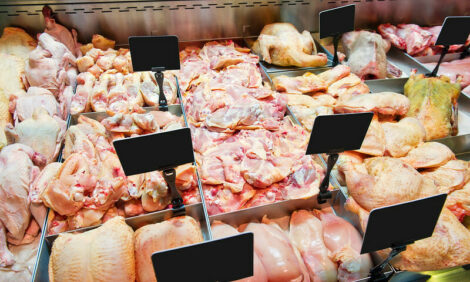



Eradication of feral swine priority
IOWA - Wild hogs not native to the United States are roaming through at least 39 states and alarming wildlife officials by their population growth in northern states, such as Iowa and Michigan.
"They destroy the natural habitat that’s out there," said Angi Bruce, who heads the Iowa Department of Natural Resource’s (DNR) southwest wildlife bureau. "It basically looks like a plow has gone through the area."
Feral swine, numbering an estimated 4 million nationwide, can spread disease if they come in contact with domestic pigs. That is a big concern in Iowa, as the nation’s top pork producer.
The rooting and wallowing activities of the creatures, which tear apart the earth to search for food, have also forced some farmers to repeatedly replant fields.
While feral swine have plagued warmer states for years, they are a recent problem in Iowa, with wildlife officials working to eradicate them since 2004. About 100 of the animals are thought to be in Southern Iowa, and officials said because they are such prolific breeders, 70 per cent must be killed off each year just to keep that number in check.
The wild pigs are a combination of escaped or neglected swine and imported Eurasian wild boars, said Gail Keirn, a spokeswoman for the the USDA’s Animal and Plant Health Inspection Service.
Under a national wildlife disease management program, Keirn said researchers will collect and test wild pigs in up to 25 states to look for the presence of classical swine fever.
People also can become infected with diseases from feral swine. Keith Massey, who grows crops and raises hogs in Southeast Iowa, contracted the bacterial disease brucellosis from his sows that were exposed to wild pigs. He experienced night sweats for weeks, took numerous shots and months of antibiotics, and was forced to have all his animals euthanized.
Last year in Iowa, a feral swine task force unsuccessfully lobbied for legislation making it illegal to import and release the animals. Some outfitters resisted, arguing any ban would hurt their business.
So, wildlife officials are left trying to eradicate the animals as best they can. Their efforts include trapping and killing the animals, and educating the public and outfitters on the importance of containing them. They are also tracking the wild pigs’ location in a geographic database.
Source: Iowafarmer.com
Feral swine, numbering an estimated 4 million nationwide, can spread disease if they come in contact with domestic pigs. That is a big concern in Iowa, as the nation’s top pork producer.
The rooting and wallowing activities of the creatures, which tear apart the earth to search for food, have also forced some farmers to repeatedly replant fields.
While feral swine have plagued warmer states for years, they are a recent problem in Iowa, with wildlife officials working to eradicate them since 2004. About 100 of the animals are thought to be in Southern Iowa, and officials said because they are such prolific breeders, 70 per cent must be killed off each year just to keep that number in check.
The wild pigs are a combination of escaped or neglected swine and imported Eurasian wild boars, said Gail Keirn, a spokeswoman for the the USDA’s Animal and Plant Health Inspection Service.
Under a national wildlife disease management program, Keirn said researchers will collect and test wild pigs in up to 25 states to look for the presence of classical swine fever.
People also can become infected with diseases from feral swine. Keith Massey, who grows crops and raises hogs in Southeast Iowa, contracted the bacterial disease brucellosis from his sows that were exposed to wild pigs. He experienced night sweats for weeks, took numerous shots and months of antibiotics, and was forced to have all his animals euthanized.
Last year in Iowa, a feral swine task force unsuccessfully lobbied for legislation making it illegal to import and release the animals. Some outfitters resisted, arguing any ban would hurt their business.
So, wildlife officials are left trying to eradicate the animals as best they can. Their efforts include trapping and killing the animals, and educating the public and outfitters on the importance of containing them. They are also tracking the wild pigs’ location in a geographic database.
Source: Iowafarmer.com








